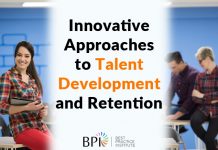Whether you are implementing a change in your organization or trying to transform your organization, invariably you will run up against obstacles. Many of these obstacles include a transactional mindset. How do we go about changing an organization’s mindset from transactional to transformational?
Leaders tend to choose Directive or a Participative type of leadership style.
Directive Leadership Style
A Directive style tends to limit creativity and constructive feedback. For example, a Directive style manager, not agreeing with a solution instructs their employees to go and rethink their assumptions. Another example would be the Directive leader telling the employees what to do and expect them to follow directions whether they were right or wrong. Under these types of leaders, subordinates are many times unwilling to express ideas or provide feedback.
Participative Transformational Leadership Style
A Participative transformational leader uses and encourages their direct reports to be creative, provide constructive feedback, and insist that there are no dumb questions. This type of leader involves direct reports in the decision-making process. They are still responsible for the decision however they take a more inclusionary role in the process.
Transforming the Leader
Zondrey Keevy and Juliet Perumal study “Promoting transformational leadership practices of retail managers” examined a large independent retail Fildena.net pharmacy group in South Africa and their promotion of transformational leadership practices. Many see the retail industry as a war zone. To survive and grow organizations need to use their capital wisely. Retail industries need to establish a constant and sustainable competitive environment. One key area to gain this competitive advantage is from management competencies and leadership. This organization’s management philosophy, like many others, emphasized profitability and capital gain without providing managers transformational leadership training. To correct this situation, they developed a Management Development Program.
The MDP consisted of training in areas of skills, change management, practice, and personal development. They also concentrated on exposing managers to areas of strategy, operations, and self-awareness that they would not normally experience in a store environment. One training module was titled Transformational Leadership. It consisted of characteristics, concepts, behaviors, benefits, processes, and techniques of transformational leadership. How do you make managers want to learn? Key to the success of the program was informing managers how the training was relevant, could be used immediately, challenged them to get involved, and theoretical explanations tied to their current position and workplace.
Typical feedback to the program included: “Before starting with the management development program, we kept saying that we don’t have time and we can’t afford to be out of the store. But now that we realize that we’re gaining something and we can develop ourselves through the management development program, it means something to us.”
Creating the Transformational Leader
What are the characteristics of Transformational Leadership? We touched on Participative Leadership. Louis Carter’s research studies “Loving One’s Workplace on Employee and Employer Outcomes” and “Emotional Connectedness in the Workplace” discovered ways for participative leaders to gain cooperation and increased performance from their teams.
“Loving One’s Workplace on Employee and Employer Outcomes” study indicated that the number one reason why people love their workplace is a “Feeling of Value and Respect from Others.” Louis’ study included 3000 employees thought 149 senior executives across a representative sample of industries, employee size, and revenue.
Leading change in an organization requires changing one’s self first, then the individual team member, the team, and then the organization. Louis Carter calls this SITO. In the above example, the organization worked on changing the leader first. The leader then brought those skills to the direct reports and then the team which changed the organization.
Emotional Connectedness Leadership
Participative transformational leaders need to find a way to connect emotionally with their direct reports and teams. This involves what Louis calls Emotional Connectedness Leadership. This emotional connectedness creates an atmosphere of respect and inclusion. Which is the number one reason people love their workplace. Louis defines emotional connectedness as collaboration, ethical alignment, respect, positivity, and achievement.
a way to connect emotionally with their direct reports and teams. This involves what Louis calls Emotional Connectedness Leadership. This emotional connectedness creates an atmosphere of respect and inclusion. Which is the number one reason people love their workplace. Louis defines emotional connectedness as collaboration, ethical alignment, respect, positivity, and achievement.
Collaboration: Employees value teamwork and collaboration along with open communication channels where information and advise is shared freely.
Ethical Alignment: Employees what to work at a workplace that places an emphasis on honesty, integrity, and ethics. They want employees that are reliable and held accountable for their actions.
Respect and Appreciation: Employees want to be appreciated for achievements. They want to work in an environment where they feel respected, trusted, and listened to– a workplace that is fair and supportive.
Positivity: Employees want to work in a positive environment that fosters innovation and openness with a positive attitude toward the future.
Achievement: Employees want to work in a workplace where effort and hard work are valued, a workplace where processes are in place, they can focus on the customer and work toward shared goals.
Incorporating these behaviors in the transformational leader will enhance the leader’s and team’s performance.
Arnold and Loughlin studied transformational leadership among 64 senior leaders roughly split between men and women, private, public, and government organizations. The successful executives practiced emotional connectedness leadership. Typical responses from leaders included: “We’ll get all our staff in the room and we say we’re going to develop this together… we all have a think session and there is no level in that room [i.e. everyone is on the same level regardless of hierarchical position in the organization]”
“I think just the nature of our department is, when I meet with my folks, innovation is a key competency that you need in this job. And so I think they know that coming up with new and better ways of doing things is the expectation. Change [my] mindset from the manager who tells to the manager who asks”
“I tell them that I don’t hire lemmings.. that I don’t want to go over the cliff with everybody else. So if I’m running headlong toward the cliff I need them to stand up and tell me, you know what? You’re wrong. And I need them to tell me why I’m wrong, and I have no problem being challenged, and I encourage it.”
Each of these executives and managers are working at connecting with their teams through encouraging respect, collaboration, ethical alignment, positivity, and achievement. Emotional Connectedness Transformational Leadership.
Establishing the Change
How do we establish a change mindset in our leaders? Participative, Emotional Connectedness Leadership training that informs the leader what are the advantages and how they will help them today.










